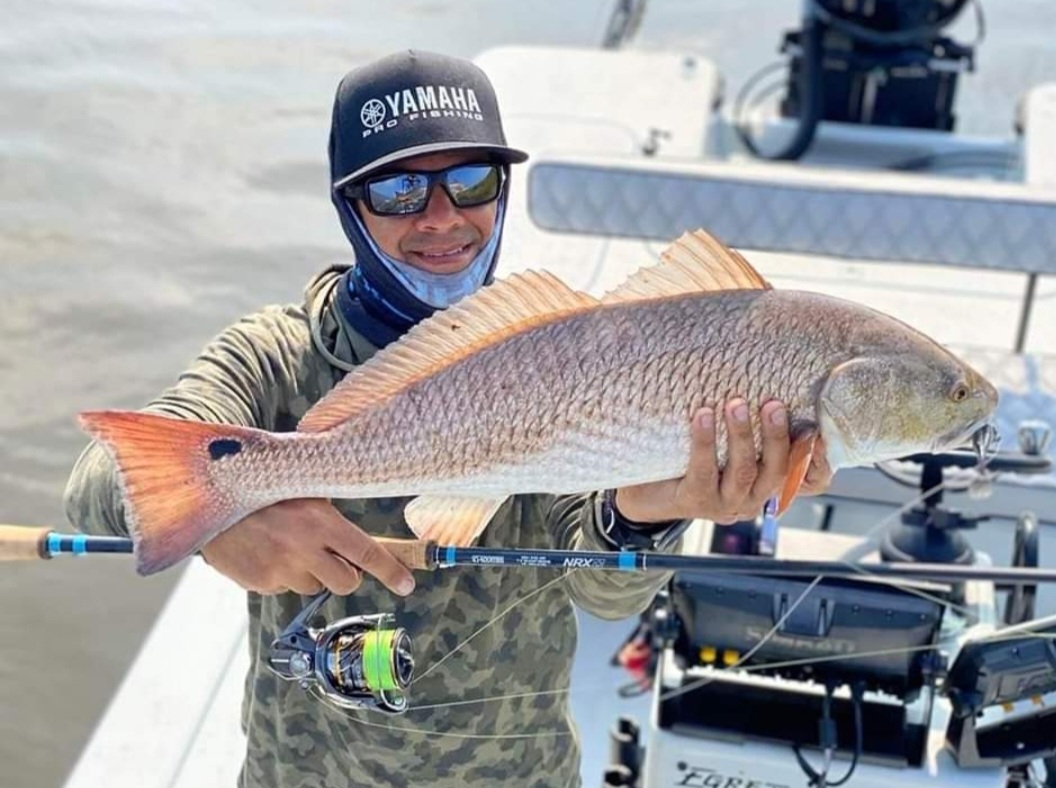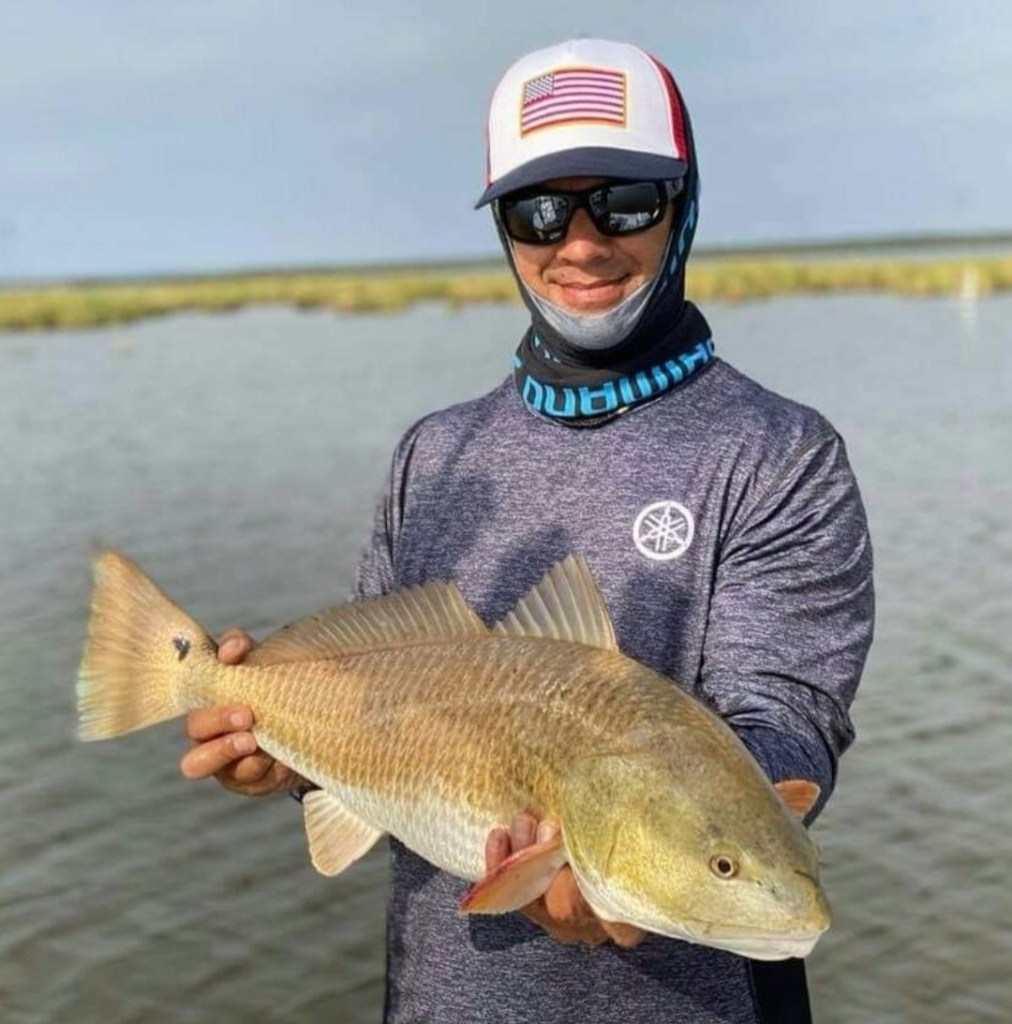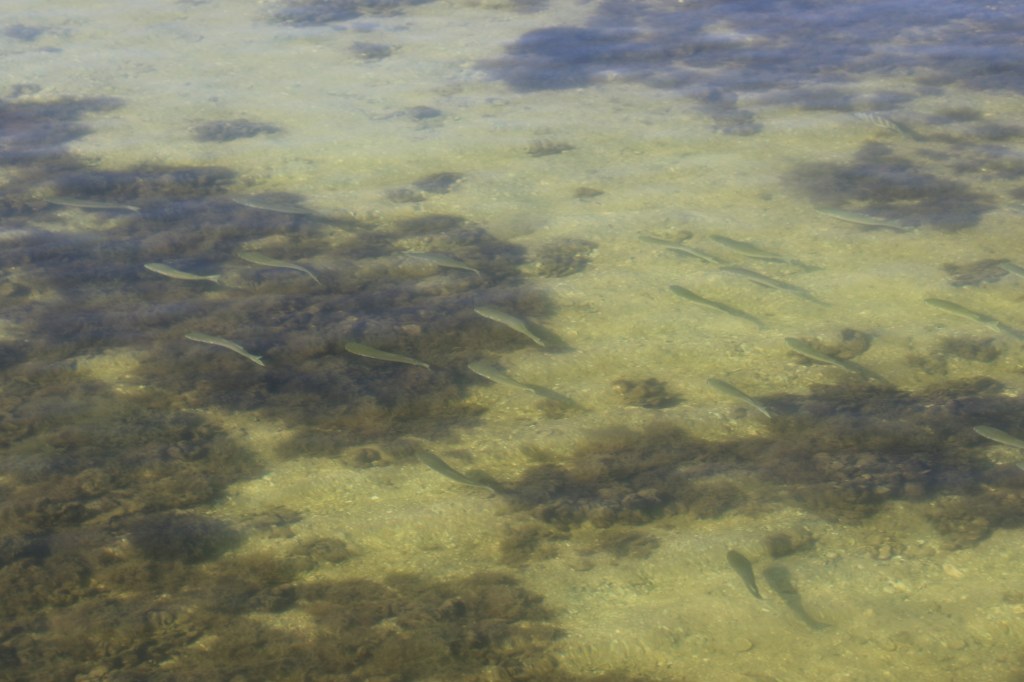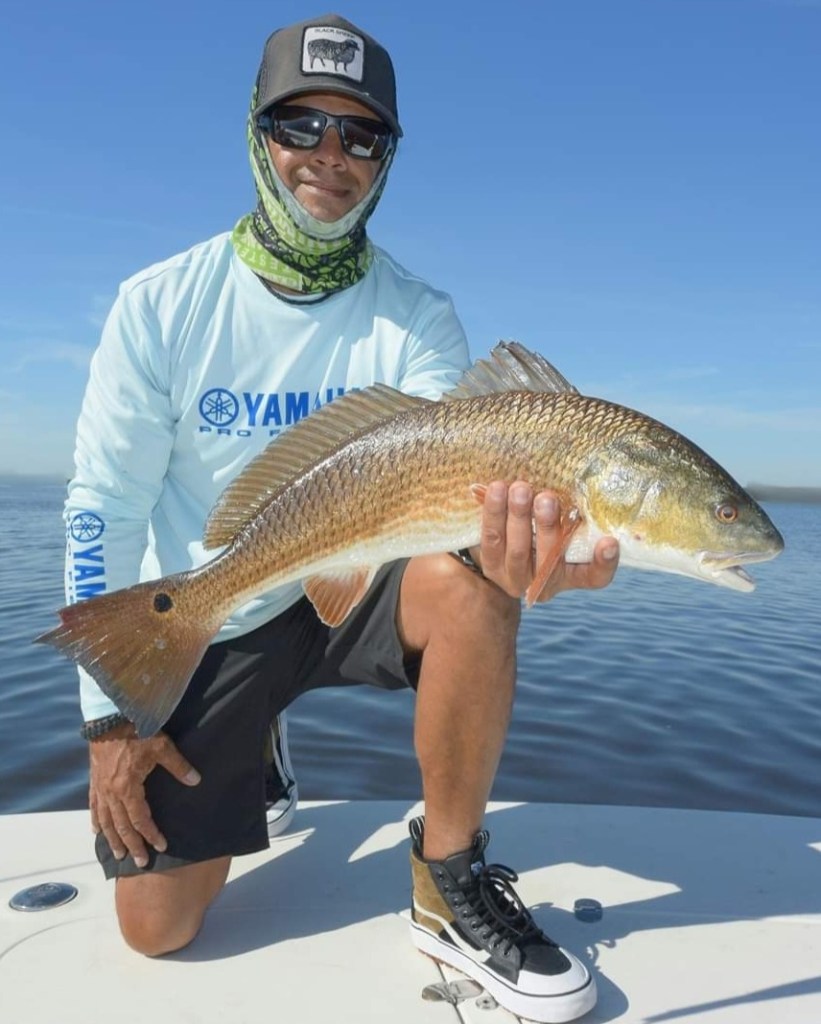
Does the three-second rule apply to food items that another person drops? Debates rage endlessly, but don’t bother arguing with a redfish. They see food, they eat food — especially when it comes to mullet.
Now, redfish definitely eat smaller juvenile mullet, often called “finger mullet,” but that’s not the focus here. It’s more of an opportunistic mindset than straightforward predation.
Even though Bassmaster Elite Series angler Chris Zaldain, who along with redfish pro Ryan Rickard won last year’s Yamaha Bassmaster Redfish Cup Championship presented by Skeeter, caught some of their bigger reds on big finger mullet-mimicking swimbaits, we’re going to focus on the jumbo adult mullet that create an irresistible feeding opportunity for the copper scaled predators.
To set up the premise, consider this definitive statement from Florida pro Chris Cenci, who returns for this year’s event with his 2022 Power-Pole Pro Redfish Tour Team of the Year partner Chris Kennedy: “We always say, ‘Find the mullet and you’ll find the redfish.’”

Key factors
Can you find redfish without finding mullet? Sure, but you can bet that every team competing in this year’s Championship, Nov. 3-5 at Port Aransas, Texas, will keep a sharp watch for these ambling, big-eyed vegetarians known for sporadic leaps.
Here’s why:
Healthy habitat: Anglers generally consider the presence of mullet schools as a sign of good water. Mark Fisher, Coastal Fisheries Division Science Director for the Texas Parks and Wildlife Department, notes that mullet are highly tolerant fish. They are capable of thriving in a wide range of water temperatures and clarities, as well as most every inshore habitat Texas offers.
“It’s hard to go out and not find mullet,” Fisher said.
Anglers generally agree that if you pull into a pocket, cove, creek or flat and see none of the telltale signs — wiggling water, leaping bodies — it’s time to leave. Logic being that if the mullet don’t like it, chances are good that redfish and other predators won’t either.
“Mullet are important in the whole food chain because they eat plant matter and convert it to fish flesh, which then goes into reds, seatrout, sharks and (other predator species),” Fisher said. “They’re an important link between the plant and animal world.”
Easy meals: Again, we’re not looking at the big striped mullet as a food source here, but the adjacent forage — now that’s the money.
“When mullet move across the bottom, they stir up crustaceans (crabs and shrimp) and baitfish,” Cenci said. “For the redfish, those are easy meals.
“If you’re on the flats anywhere from Port Aransas, to Southwest Florida to the Big Bend (Florida Gulf Coast), and see the big schools of roe (mature egg-bearing) mullet, you’ll find redfish with them.”
Cenci’s so adamant about this aspect of his redfish game that flats with little to no mullet activity do not merit his attention. Conversely, a flat with big schools pushing water and launching frequent jumpers holds serious appeal.
The mullet factor bears a particular relevance to the Redfish Cup Championship, because tournament rules prohibit the use of towers — elevated helm stations or casting decks that improve the anglers’ ability to scan broad areas and spot redfish.
“You can’t just pull up on a giant flat and (immediately) find the redfish (without a tower),” Cenci said. “That’s why finding the mullet is so important.”

Mullet profile
Texas waters hold the smaller silver mullet (Mugil curema), which max out at about a pound and the larger striped mullet (Mugil cephalus), which can reach 3-4 pounds. When you see leaping mullet, that’s the latter.
As Fisher notes, seasonality bears a predictable impact on mullet density and location.
“In the fall they’re queueing up for their spawning run into the Gulf, so you’ll find them (congregating) closer to the Gulf passes and along the Gulf beaches,” he said.
This means Redfish Cup Championship competitors can expect a strong mullet showing. Cenci said the same thing happens in Florida waters, but high demand for mullet roe (considered a delicacy overseas) brings heavy commercial cast netting pressure.
“The mullet boats are something we have to contend with in Florida during the fall,” Cenci said. “They’ll run around and stir up the flats, so it’s harder to approach the redfish.”
Fortunately for the Redfish Cup Championship field, Texas does not allow this. While there is no size or bag limit most of the year, the state limits mullet harvest to a maximum length of 12 inches during October, November, December and January.
“We did this in the mid-90s to prevent the development of a roe fishery,” Fisher said. “We do have a small bait fishery for mullet, and we allow the use of cast nets and bait seines, and they may also be caught by shrimp trawls. We banned the use of entangling nets (gill nets, trammel nests, etc.) for all species in 1988.”
Bottom line, unmolested mullet are happy mullet and happy mullet equals happy redfish.
Remember Cenci’s rule: Find the mullet, find the redfish.
Baits and tactics
When it comes to factoring mullet into your bait selection, two schools of thought guide this decision:
Match the hatch: Simple and straightforward, imitating the smaller finger mullet that big reds readily gobble delivers jolting bites. Last year, Zaldain did just that by breaking out the 6- to 7-inch soft-body swimbaits for which he’s well known on the Elite Series.
On falling tides, when draining creeks funnel lots of prey into vulnerable areas, it’s not uncommon to find reds snooping around these outfalls where finger mullet join blue crabs and mud minnows in the briny buffet. Casting swimbaits, soft-plastic jerkbaits and paddletail jigs upstream and retrieving through the natural drainage might find a taker.
Hard bait options range from full-size topwaters like a Zara Spook or MirrOlure Top Dog to subsurface twitch baits like LIVETARGET’s Sardine or Rapala’s X-Rap Saltwater SubWalk.
Mixed plate: Emulating the crustaceans and finfish that rumbling mullet displace could mean anything from appropriately sized paddletails or grub style jigs, to scented shrimp lures, to gold spoons.
One of the biggest benefits of fishing around mullet schools is the fact that redfish become so conditioned to their hosts’ splashing and swirling that they’re far more tolerant than they might be apart from the herd. Falling baits that might spook them in a quieter scenario are barely noticed amid mullet noise.
That being said, one overriding rule governs all: Do not spook the mullet.
Redfish not only benefit from the mullet’s food displacement; they also rely on their hosts for cover and concealment. If the mullet go, the redfish go.
With dolphins and sharks ever near and ospreys threatening aerial assaults, mullet are keenly aware of their vulnerability. That’s why you’ll often see the school suddenly boil with frantic movement.
Usually, that’s only a short-lived panic resulting from one mullet goosing another and igniting a chain reaction. Give them a minute and they’ll typically settle down and return to feeding.
Fact: Mullet are a high-strung lot given to frequent flake-outs. You can’t avoid this; just don’t give them any reason to do so.
Silent wind drifts or staking out an intercept course is your safest bet, but if you’re stalking them on the push pole, take great caution to avoid bumping the side of the boat or hitting any noisy rock or shell bottom with the foot.
On the trolling motor, keep it low and steady. Avoid sudden pulses, as the sound and pressure wake can send the mullet — and reds — packing.

Big air
So why do mullet leap? The obvious answer is, correctly so, predation. Dolphins and sharks love their mullet meals, but we’re not talking about leaping for your life. Rather, it’s that lazy belly flopping action that often catches the angler’s eye and guides them to an area where mullet movement may be attracting redfish escorts.
Some say it’s a form of schooling interaction — a signal or observational move. Others surmise that the post-leap splashdown shakes loose hitchhiking parasites.
A definitive explanation has thus far remained elusive. Just ask Fisher. “The best explanation I’ve heard is that it’s fun.”
Know what else is fun? Catching redfish. Lots of ways to do that, but you’ll seldom regret following a leaping mullet to the school that is very likely kicking up the next redfish meal.
Even if it takes more than three seconds.





